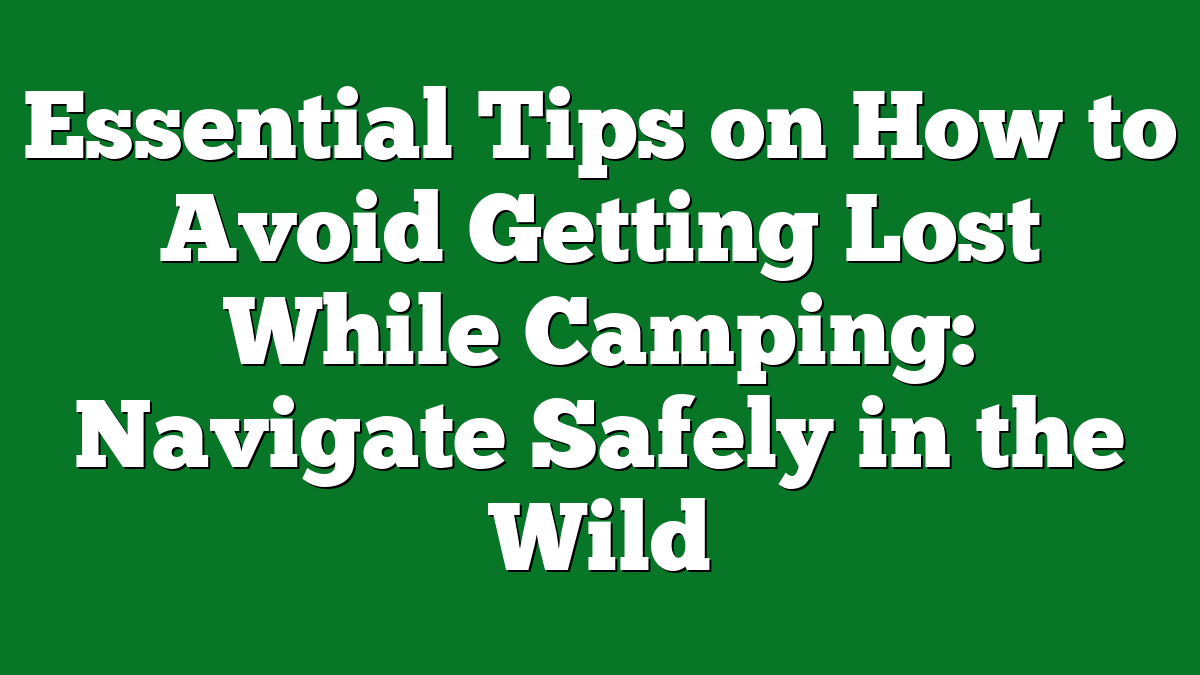Camping is one of my favorite ways to escape the hustle and bustle of everyday life. There’s nothing quite like immersing myself in nature, breathing in the fresh air, and soaking up the tranquility. But let’s be honest—getting lost in the woods can turn a relaxing adventure into a stressful situation in no time.
I’ve had my share of close calls, and I’ve learned a few tricks along the way to help me stay on track. Whether you’re a seasoned camper or just starting out, knowing how to navigate your surroundings can make all the difference. In this article, I’ll share some practical tips to help you avoid losing your way and ensure your camping experience is as enjoyable as it should be.
Importance of Navigation Skills
Navigation skills ensure safety and enhance the camping experience. Understanding how to find your way in the wilderness proves essential for both the enjoyment and security of any outdoor excursion.
Understanding the Basics of Outdoor Navigation
Understanding outdoor navigation begins with familiarizing myself with the elements of the environment. Key skills include orienting myself using landmarks, recognizing natural features, and understanding cardinal directions. Using the sun’s position during the day or the North Star at night helps me determine direction. Practicing these skills reinforces my ability to navigate without relying solely on technology.
The Role of Maps and Compasses
Maps and compasses serve as fundamental tools for outdoor navigation. A detailed topographic map illustrates terrain features, trails, and water sources crucial for planning my route. Using a compass, I can align the map with the landscape, ensuring I’m heading in the right direction. Regularly checking my location on the map helps confirm I’m on track, making it easier to avoid getting lost in unfamiliar areas.
Preparing for Your Camping Trip
Preparing for a camping trip sets the foundation for a successful experience in the great outdoors. With careful planning, I can navigate my way through the wilderness confidently.
Researching Your Destination
Researching my destination offers essential insights into the area. I check topographical maps to understand elevation changes and terrain features. I also look for any notable landmarks like rivers or unique rock formations, which serve as great reference points while exploring. Additionally, researching local wildlife and plants helps me avoid hazards and enhances my appreciation for the ecosystem. Local regulations, like fire bans or restricted zones, deserve a thorough review to ensure compliance and safety while camping.
Packing Essential Navigation Tools
Packing essential navigation tools equips me for any adventure. I always include a detailed map of the area, preferably a topographic one, to visualize the terrain. A reliable compass accompanies the map, allowing me to orient myself accurately. I also download offline maps on my phone, ensuring I’ve got digital options. A GPS device provides another layer of reassurance, especially when hiking less-traveled paths. I never forget a trusty whistle; it serves as a quick way to signal for help if I can’t be found. If I prepare well with these tools, I significantly reduce the risk of getting lost in the wild.
Tips for Staying Oriented
Staying oriented while camping helps maintain a sense of direction and safety. I’ve found that following a few key strategies makes all the difference during outdoor adventures.
Recognizing Landmarks and Terrain Features
Identifying landmarks and terrain features simplifies navigation. I focus on significant objects like distinctive trees, rock formations, or bodies of water. These natural markers help establish my position relative to the campsite. Paying attention to elevation changes and slopes aids in understanding the landscape. If I spot a mountain peak or a unique valley nearby, I know how it fits into my overall location. Familiarizing myself with the area’s geography significantly increases my confidence out there.
Keeping Track of Your Route
Logging my path ensures I remember the way back. I often use a simple method: noting turns, unique features, and distances between points. This mental map becomes crucial, especially on longer hikes or in areas lacking clear trails. Carrying a notepad or using a GPS device to record my route offers an additional safety net. In circumstances where visibility decreases or if I stray too far, having a reference point helps guide me back without panic. Keeping track enhances my camping experience by reducing the fears of losing my way.
What to Do if You Get Lost
Getting lost in the woods can happen to anyone, even experienced campers. Staying calm and assessing the situation is crucial to finding your way back.
Staying Calm and Assessing Your Situation
Staying calm is the first step. Anxiety can cloud judgment and lead to poor decisions. Take a few deep breaths, and focus on your surroundings. Assess what you’ve got: your navigation tools, food, water, and emergency supplies. Remember your last known location and retrace your steps mentally. If you have a topographic map with you, look for identifiable landmarks. Familiarizing yourself with the terrain can help orient you.
Techniques for Finding Your Way Back
Utilizing effective techniques can significantly enhance your chances of returning to your campsite.
- Landmarks: Identify natural landmarks, like rivers or ridges, that can guide you.
- Compass: Use your compass to establish cardinal directions. If you know the direction of your campsite, head that way carefully.
- Trail Navigation: If you’ve walked a trail, follow it back. Look for distinctive features or markers encountered on your way in.
- Remembering Turns: If you deviated from a path, recall the turns and unique features you passed. Noting these can help you retrace your route.
- Whistle: If you’re in distress, use your whistle. Three short blasts signal distress, making it easier for rescuers to locate you.
Implementing these strategies not only helps you find your way back but also reinforces your confidence in navigating the wilderness.
Conclusion
Camping is one of my favorite ways to unwind and reconnect with nature. By taking the time to prepare and equip myself with the right navigation tools I can truly enjoy the great outdoors without the stress of getting lost.
Practicing my navigation skills and staying aware of my surroundings makes all the difference. I find that recognizing landmarks and keeping track of my route not only boosts my confidence but also enhances my overall camping experience.
So whether you’re a seasoned pro or just starting out remember that a little preparation goes a long way. Happy camping and may your adventures always lead you home!











